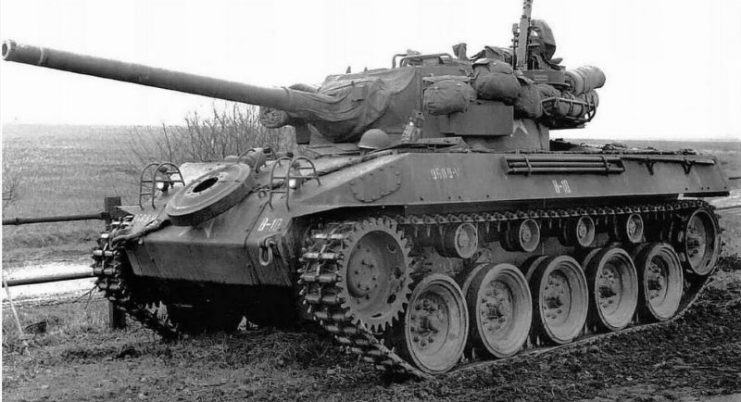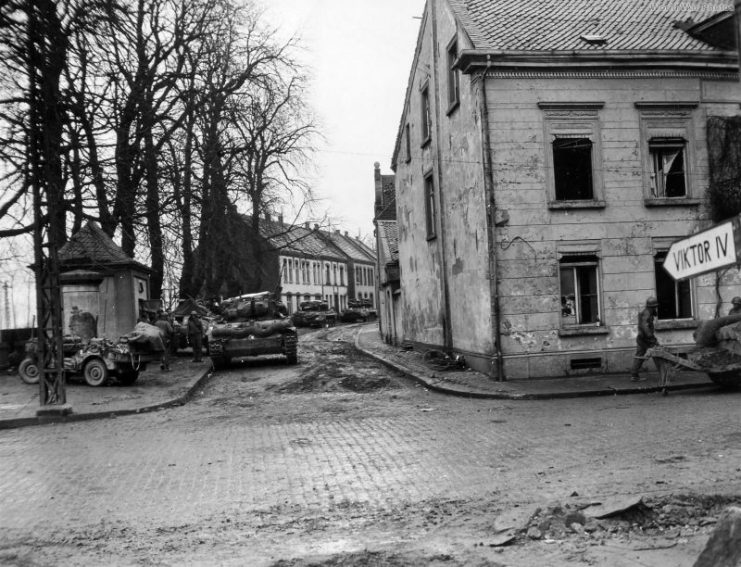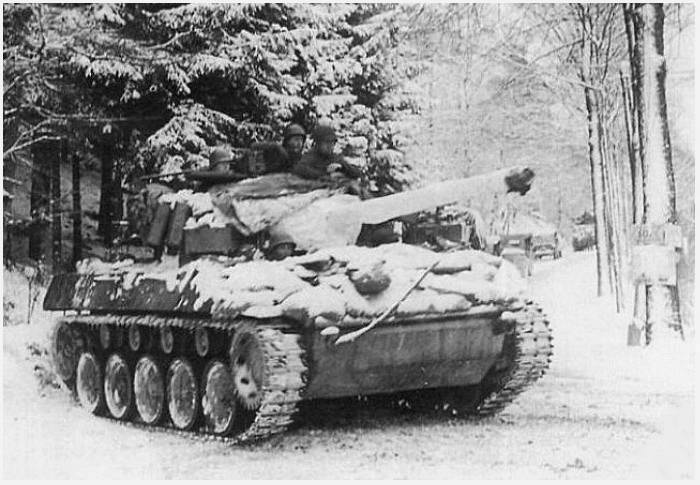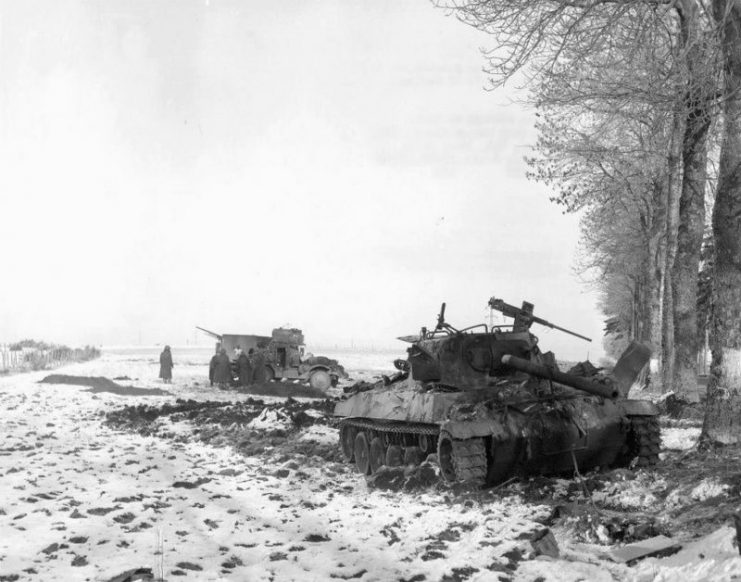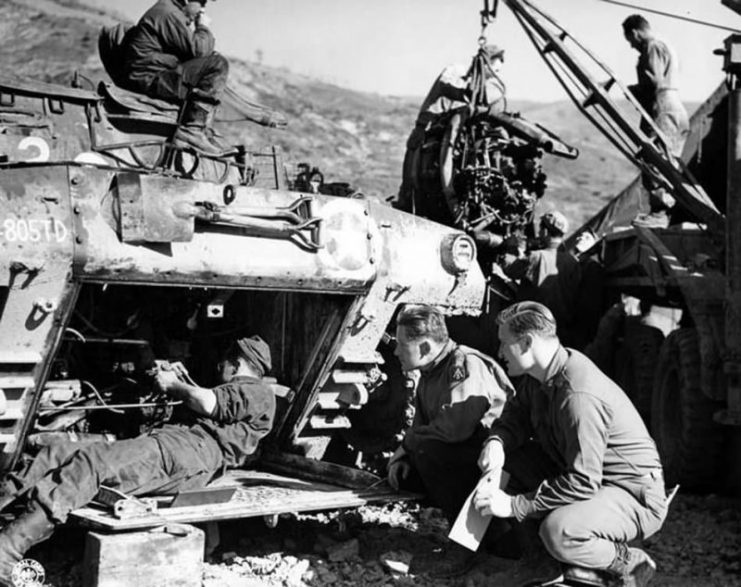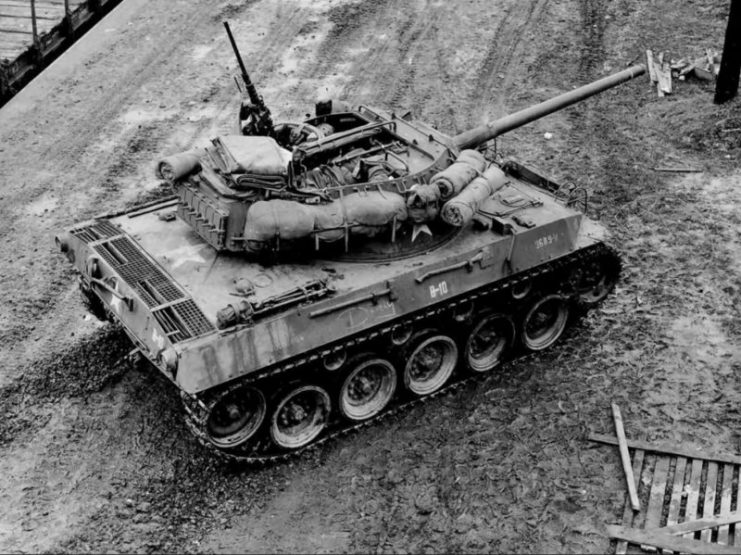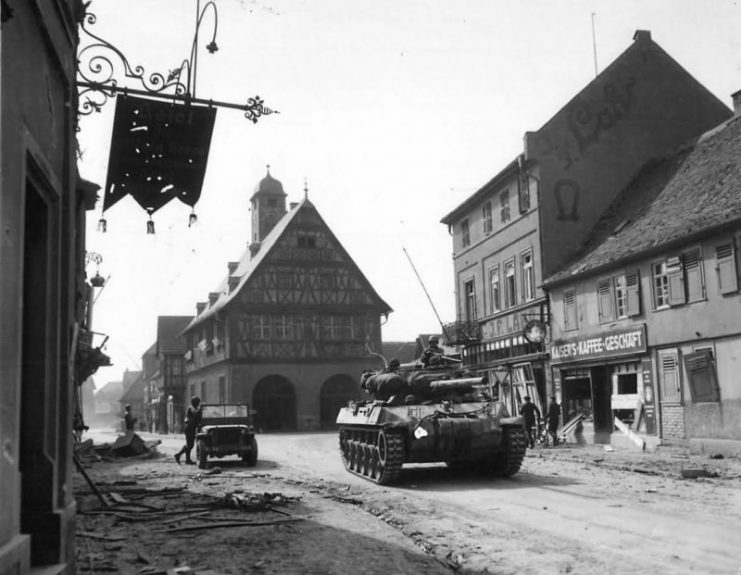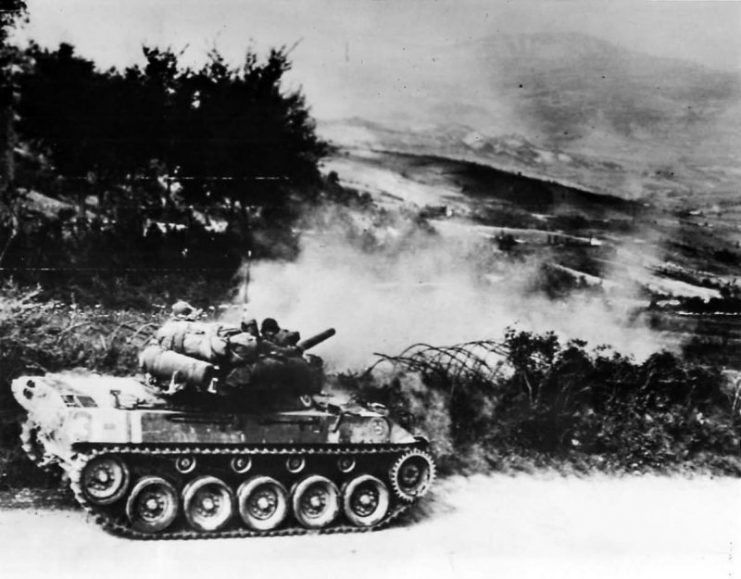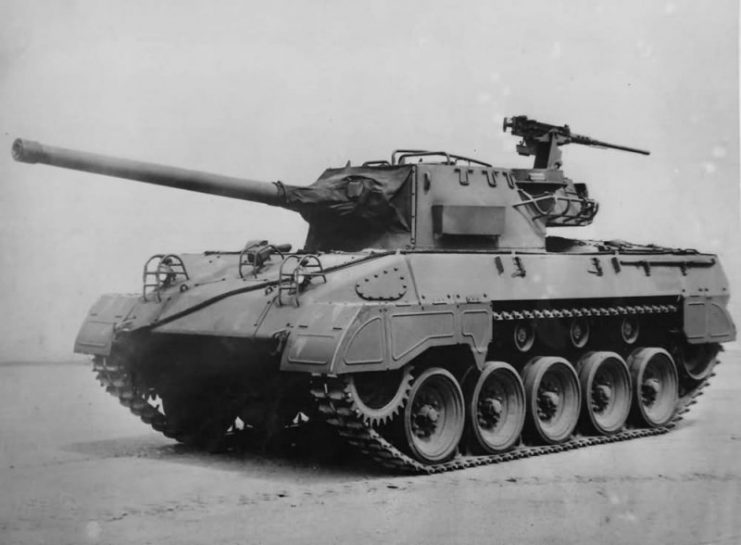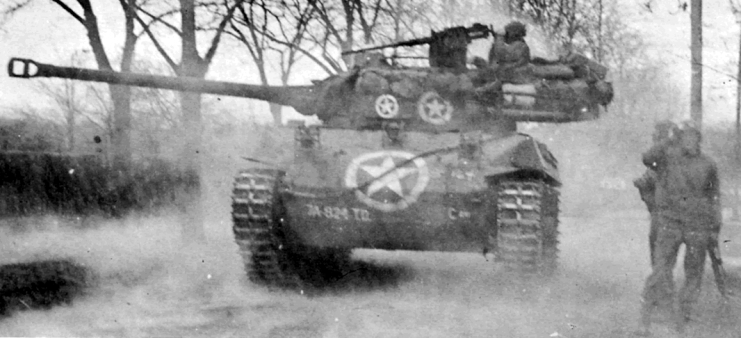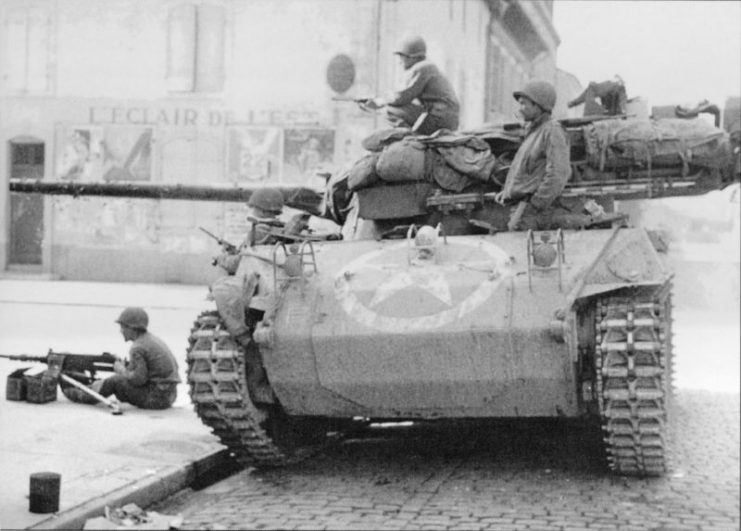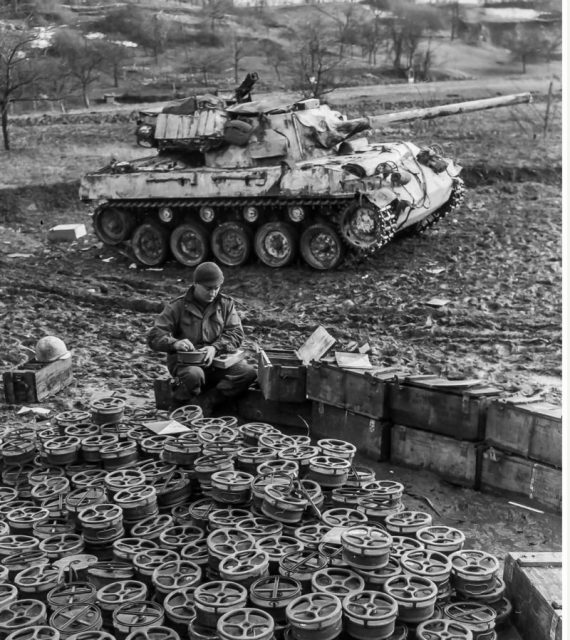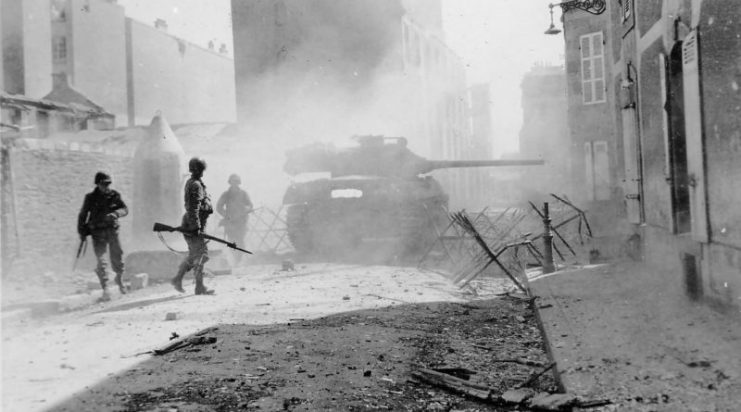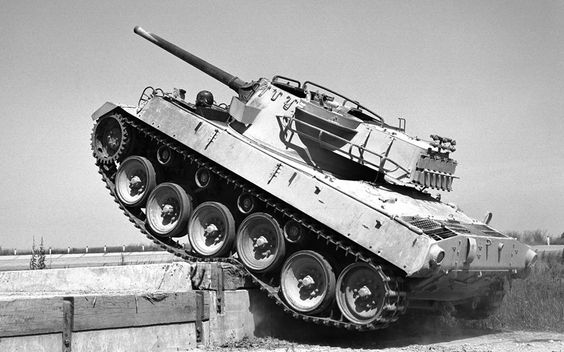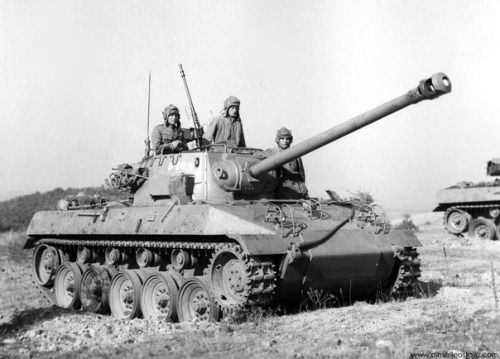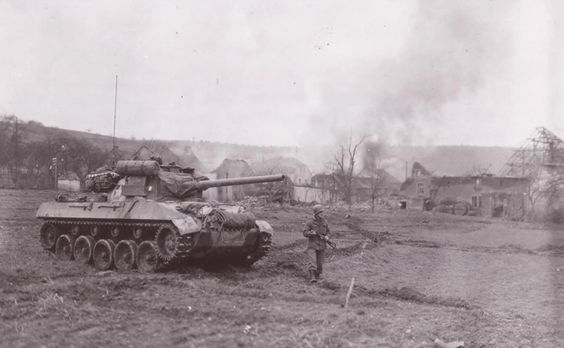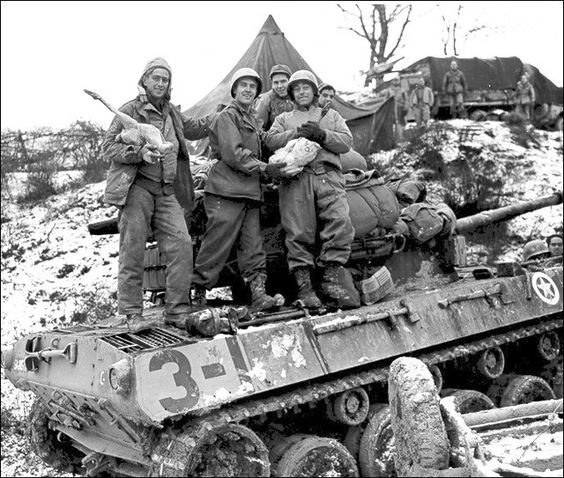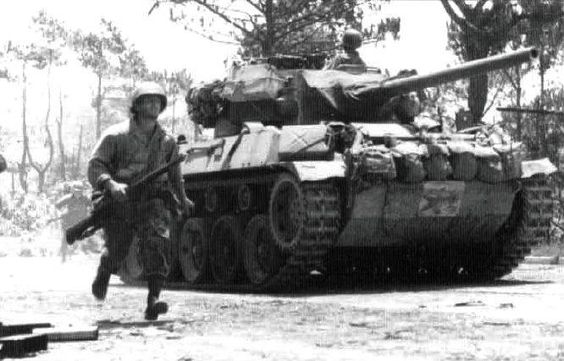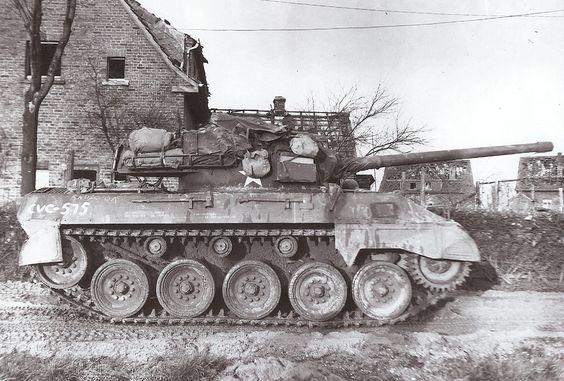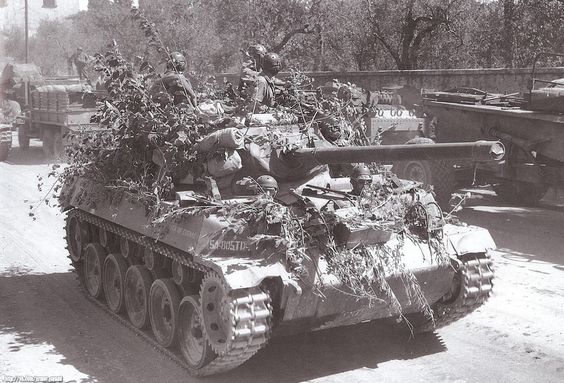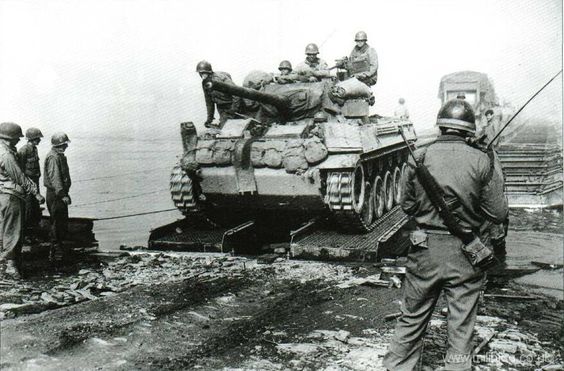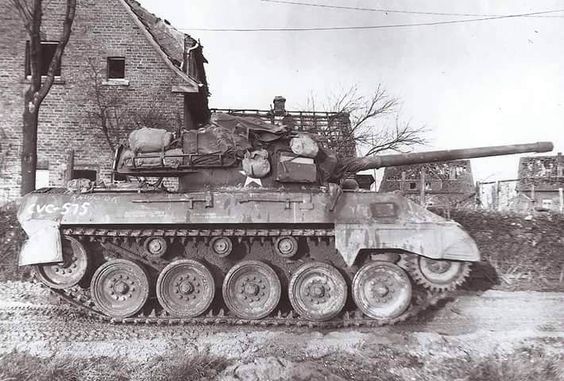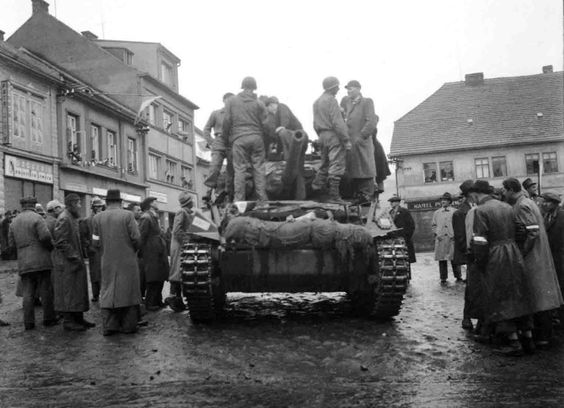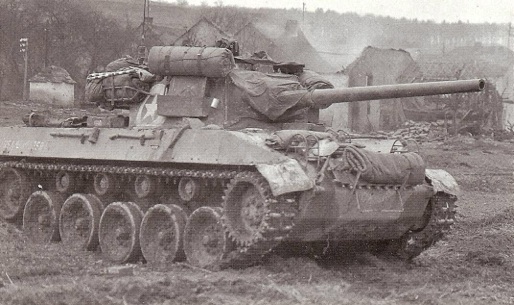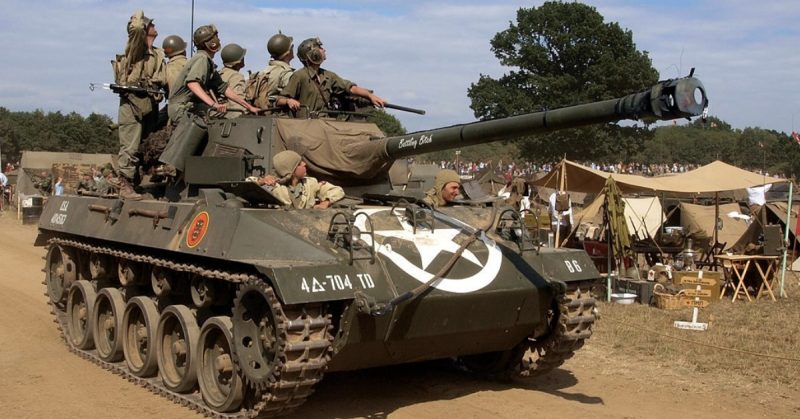Lieutenant Colonel Andrew Davis Bruce was looking for a suitable armored fighting vehicle to form the bulk of his Tank Destroyer Force. Once offered an insight into the M10 Tank Destroyer prototype, he was fairly disappointed.
The M10 was too heavy and too slow to meet Bruce’s requirements. What he needed wasn’t a moving fortress, but more of a cruiser with superior firepower.
Thus a new prototype was offered to him ― one that would soon evolve into the M18 Hellcat, the fastest American tank ever to hit the roads.
Of course, this was the direct consequence of keeping the armor at its bare minimum, while utilizing the same Wright R975 radial engine used on Sherman tanks. Bruce was pleased, and so were the United States Armed Forces, for this proved to be the right choice.
The tank destroyer was capable of achieving the incredible speed of 55 mph on the road while packing a 76 mm gun. It was lighter, smaller, faster and more comfortable than the Sherman, while twice as deadly.
Entering serial production in 1943, it served mainly in Europe, but had a noticeable role in the Pacific theater in the Philippines and Okinawa.
The Hellcat first saw combat in the bloody Battle of Anzio, from where it continued its highly successful career in the Italian campaign.
The M18 achieved fame during the Battle of the Bulge where it played a key role in tackling enemy armor. Actively using hit and run tactics against enemy Tigers and Panthers, Hellcat tank destroyers would usually flank them with ease due to their versatility and fire from a distance of up to 3,000 ft, penetrating their side armor.
However, the tank had a weak point. Apart from thin armor, the Hellcat came with an open top turret, which left the crew exposed to snipers and other small arms fire as well as hand grenades.
Despite its weakness, the Hellcat became legendary by having a higher kill-to-loss ratio than any tank or tank destroyer fielded by U.S. forces in World War II, which officially made it the most effective U.S. tank of the Second World War.
After WWII, the Hellcat saw limited action in Korea, mostly as a variant designated as the M39 Armored Utility Vehicle which acted as an armored personnel carrier, cargo vehicle and as a gun tractor.
